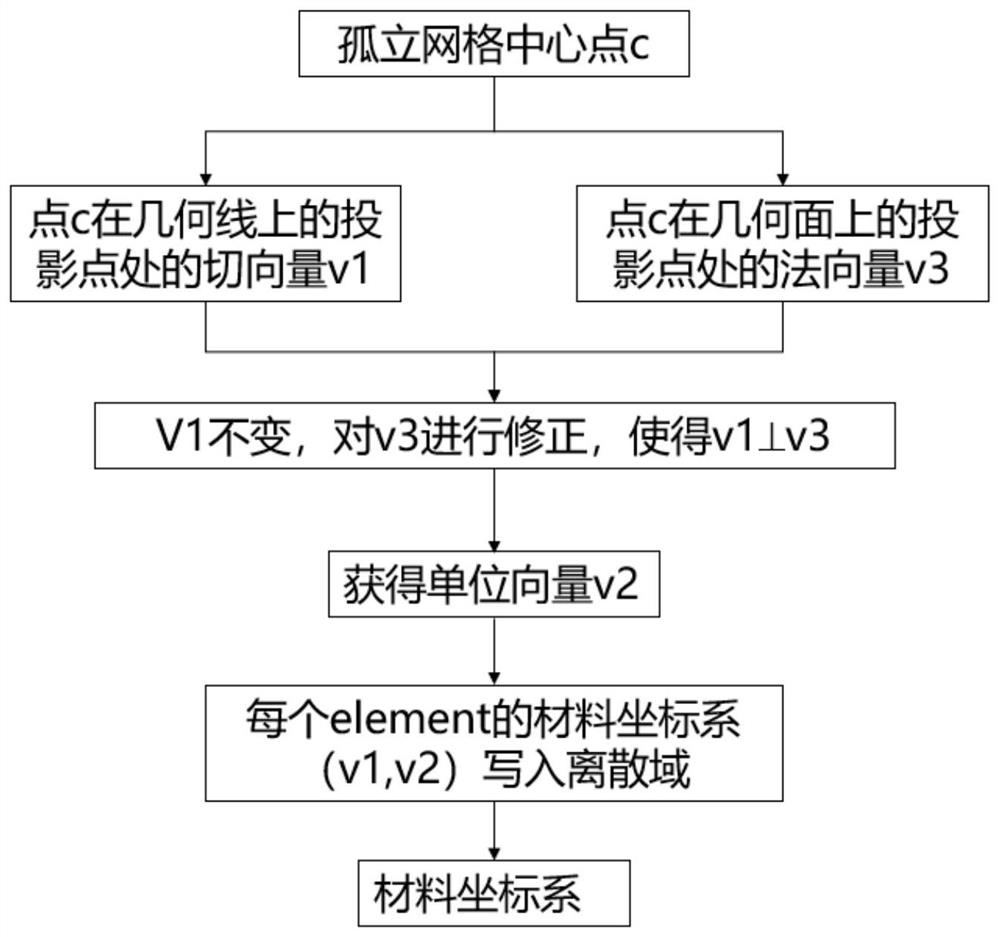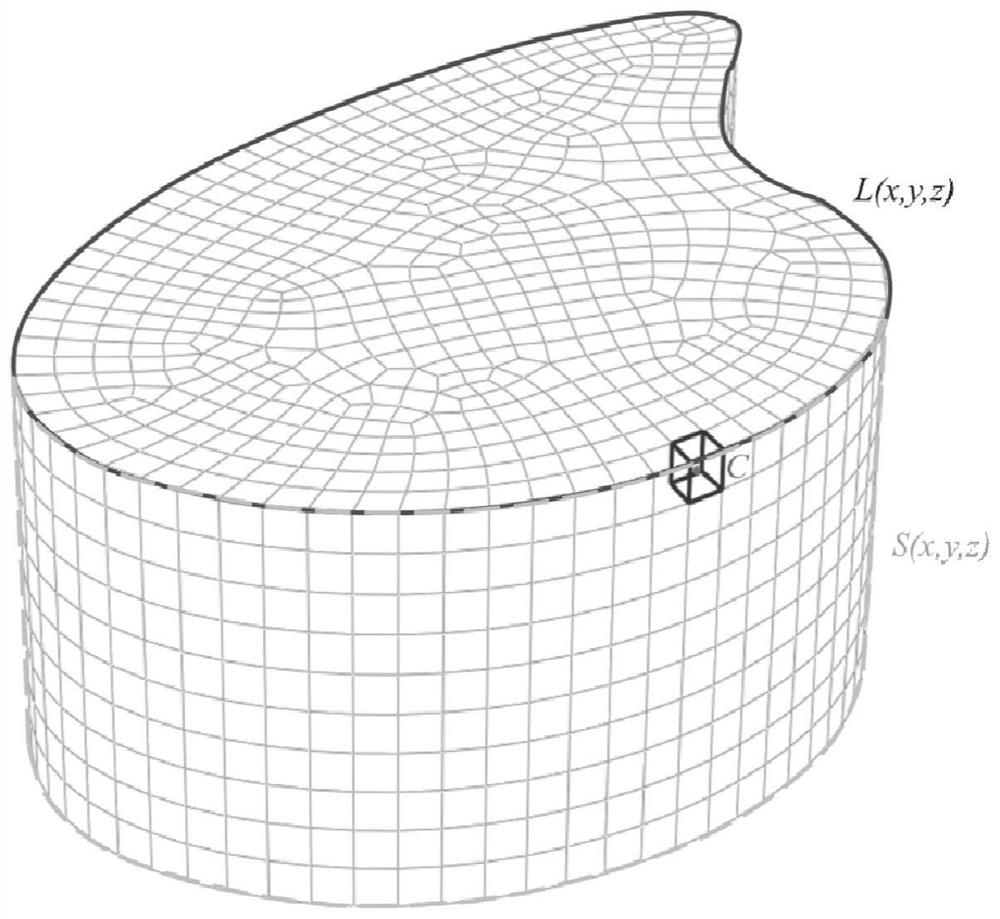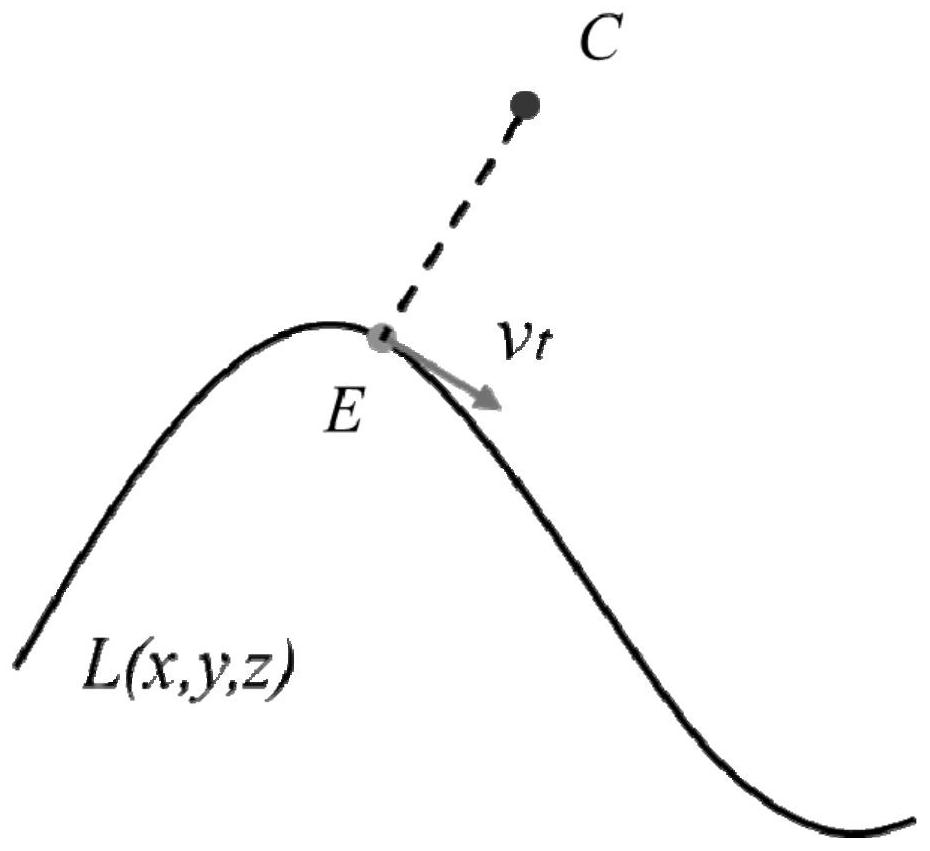Stress-strain analysis method for anisotropic material
An anisotropic, stress-strain technology, applied in the field of isolated grid coordinate mapping of anisotropic materials, can solve the problems of grid discreteness, grid quality limitation, difficult selection of surfaces and lines, etc., to improve accuracy and precision degree, to ensure consistency and accuracy, and to improve the effect of strength calculation accuracy
- Summary
- Abstract
- Description
- Claims
- Application Information
AI Technical Summary
Problems solved by technology
Method used
Image
Examples
Embodiment 1
[0056] In this exemplary embodiment, a stress-strain analysis of a component of a ceramic matrix composite material is performed using the stress-strain analysis method for anisotropic materials provided in accordance with embodiments of the present invention. Firstly, the geometric model of the component of ceramic matrix composite material is established, and the geometric model is imported into Hypermesh for mesh division, and the isolated mesh model is obtained.
[0057] like Figure 5 shown, import the isolated mesh model into Abaqus. Next, import the geometric model into Abaqus and place it in the same Model as the isolated mesh model.
[0058] Next, add material parameters and / or material directions for the isolated mesh model. The step more specifically includes, acquiring the coordinates of the center point of each grid unit in the isolated grid model; such as Image 6 , Figure 7 As shown, the line is selected as the main direction of the material, and the surfac...
PUM
 Login to View More
Login to View More Abstract
Description
Claims
Application Information
 Login to View More
Login to View More - R&D
- Intellectual Property
- Life Sciences
- Materials
- Tech Scout
- Unparalleled Data Quality
- Higher Quality Content
- 60% Fewer Hallucinations
Browse by: Latest US Patents, China's latest patents, Technical Efficacy Thesaurus, Application Domain, Technology Topic, Popular Technical Reports.
© 2025 PatSnap. All rights reserved.Legal|Privacy policy|Modern Slavery Act Transparency Statement|Sitemap|About US| Contact US: help@patsnap.com



